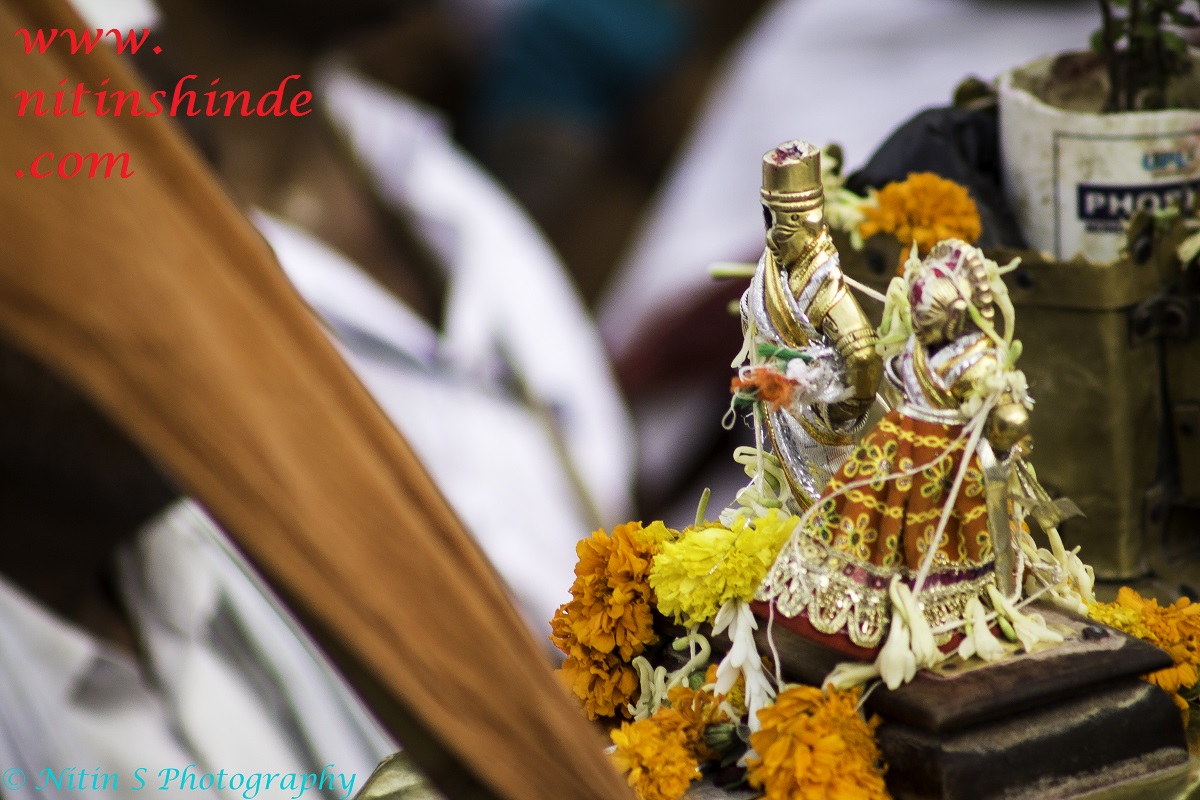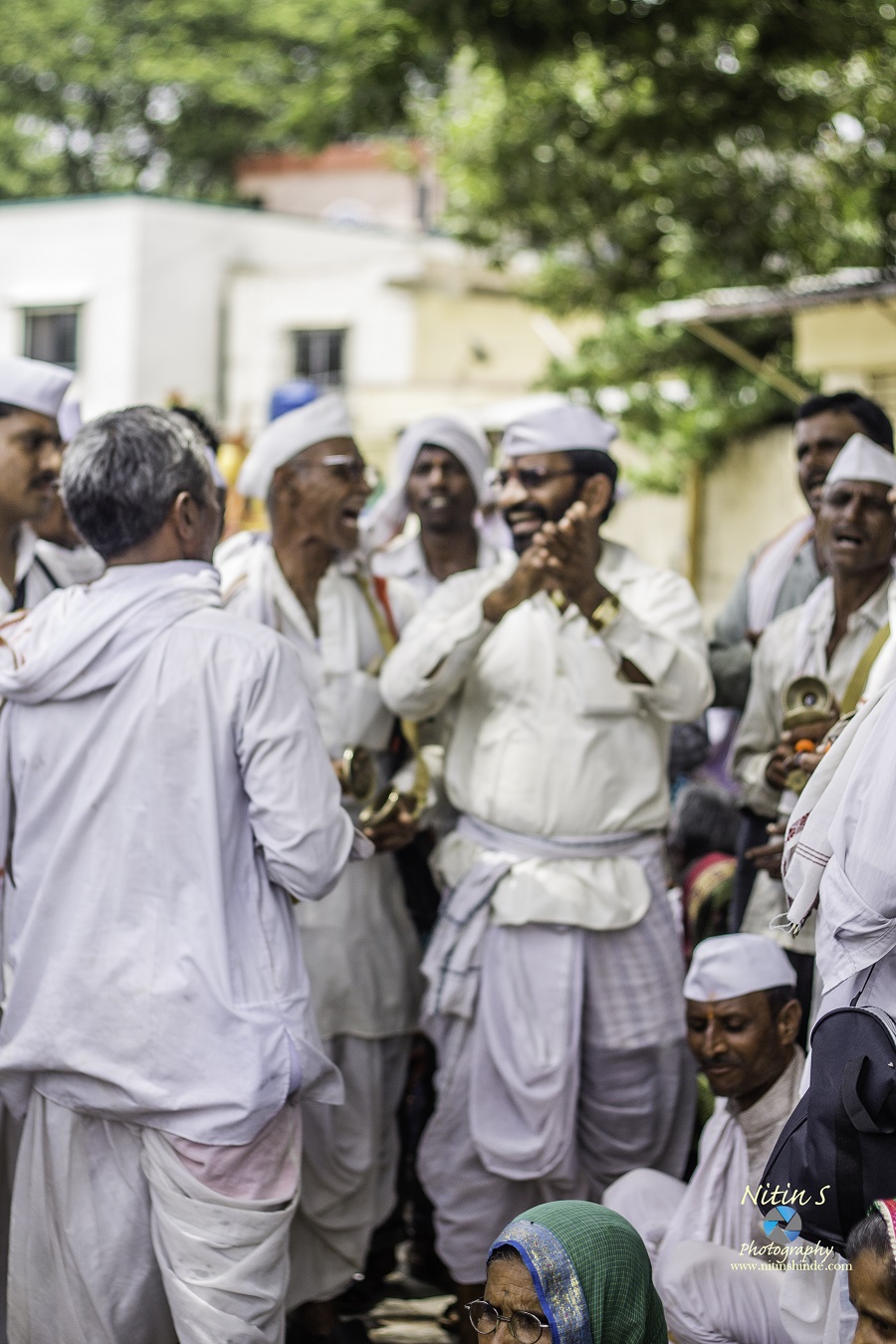पंढरपुर वारी २०१७
२०१६ वारी - हडपसर ते सासवड
http://www.nitinshinde.com/p/pandarpur-waari-2016.html
http://www.nitinshinde.com/p/waari-2016-part-2.html
Concept of Wari
The PANDHARPUR WARI is distinct from all other forms of pilgrimages like the ‘yatra’ in a variety of ways. To begin with, it is a collective form of BHAKTI (worship) often undertaken as an extension of family tradition.
Pandharpur Waari -2015
This largest religious Padayatra ("pilgrimage by foot") consists of over 1 million pilgrims travelling for 21 days to the Vithoba temple, Pandharpur by foot.
It has a predetermined scheduled and route and has no purpose other than sheer worship. The ‘yatra’ on the under hand is undertaken by individuals at their convenience to a variety of deities for personal reasons. Participating in the WARI is its own reward and Panduranga the lone object of worship.
Pandharpur 2014
The WARI is a microcosm of the vast sects, sub-sects, castes and trades that go into the making of the state of Maharastra – as men, women, young and old people from all walks of life, age and socio-economic status walk alongside each other, never for a moment being aware of their differences or status. Most unconventional is the belief that the Lord Vithhal awaits this meeting with his devotees (bhaktas).
The eagerness to meet Lord Vitthal and the repetitive chanting of RAM-KRISHNA-HARI refrain during the walk are unifying bonds among different peoples all termed WARKARIS. No other rituals dot the WARIKARI horizon unlike in the ‘yatra’ where host of rites and rituals are prescribed and have to be adhered to. In short, WARI is synonymous with annual pilgrimage on foot to PANDHARPUR and the WARKARI refers to the ardent devotee of Lord Vitthal.
The WARKARI SAMPRADAYA (sect) considers all the EKADASHIs (the eleventh days after waxing and waning of the moon) as especially auspicious. Even among these are considered more significant the Aashaadhi (June-July) and Kartiki (November-December) Ekadashis. These Ekadashis coincide with the new-moon fortnights. That is when PANDHARPUR WARI is undertaken in Maharashtra. Besides these, two more WARIs viz the Chaitra (or spring - first lunar month) and Maghi (eleventh month of the Hindu lunar calendar) Ekadashis are also deemed to be important. The later two are particularly attended by
Pandharpur Wari or Vari is an annual pilgrimage (yatra) to Pandharpur which is the seat of the Hindu god Vithoba in the Indian state of MaharashtraNumerous palakhis join the main palkhi that starts from the Dehu palakhi. The wari culminates at the Vithoba temple on Ashadhi Ekadashi.Devotees from Maharashtra and nearby areas set out for Pandharpur, wearing holy basil beads and singing the glories of Vithoba and songs like "Gyanba Tukaram", commemorating the saints.
Upon reaching Pandharpur on Ashadi Ekadashi, these devotees take a holy dip in the sacred Chadrabhaga River before proceeding to take Darshan (see) Vithoba's central icon in the main temple.

In honour of the deity, palakhis (palanquin processions) carrying the paduka (foot prints) of various saints - most notably Dnyaneshwar and Tukaram - from the Varkari ("one who performs the Wari") sect (which venerates Vithoba), are taken from their respective shrines to Pandharpur. The tradition is more than 700 years old.
The Varkaris - whose patron deity is Vithoba - undertake the annual pilgrimage (Wari) to Pandharpur, reaching there on Ashadhi Ekadashi, the eleventh lunar day (Ekadashi) of the bright fortnight (Shukla paksha) of the Hindu month of Ashadha (June - July). Pilgrims carry palanquins of the saints from their samadhi shrines.This is said to be the World's largest and oldest people movement where people gather on a specific day every year and perform a walk of a distance of around 250 km.
The Wari begins on the 8th/9th lunar day of the waning moon in the Hindu month of Jyeshtha and reaches a day before Ashadhi Ekadashi at Pandharpur. People from various castes and socio-economic backgrounds participate in the Wari, with the common goal to reach Pandharpur.
Along with the Dindi (palakhi) procession, service (seva) to the poor and needy, like Amrut Kalash (annadana - donation of food), Narayan seva, medical help and building and repairing of rural infrastructure, is done. This is known as Seva dindi.
Participation in Ashadi Dindi and Seva Dindi helps an individual in many ways by bringing good health, peace & prosperity in his life. Chanting the continuous glory of the God in the Ashadi Dindi procession and Seva Dindi purifies an individual, there is an inner cleansing that takes place in Mind, Body and Spirit and the participants tend to lose their individual identities and experience bliss. It develops all aspects of human personality and helps us understand the true purpose of Life.
Dnyaneshwar's palkhi (palanquin), holding the footwear of the saint, is carried with honour in a silver bullock cart from Alandi to Pandharpur.
There are two routes on which Wari performs. Dehu - Pandharpur and other Alandi - Pandharpur.
Dehu-Pandharpur route
The pilgrims known as "warkaris" starts the main pilgrimage from Dehu in Pune district on foot, carrying the palkhi (palanquin) of Saint Tukaram, a renowned devotee of Lord Vitthala, a form of lord Vishnu. It is known as Sant Tukaram’s Palkhi procession. It starts from Dehu & reaches Pandharpur via Aakurdi, Lonikalbhor, Yavat, Varvand, Baramati, Indapur, Akluj & Wakhri respectively.
Alandi-Pandharpur route
The pilgrims starts from Alandi in Pune district on foot, carrying the palkhi (palanquin) of Sant Dnyaneshwar’s Palkhi and reaches Pandharpur via Pune, Saswad, Jejuri, Lonand, Taradgaon, Phaltan, Natepute, Malshiras, Velapur, Shegaon & Wakhri to Pandharpur.
Both the palkhis meet at Pune, then at Wakhari and then further meet just before Pandharpur.
Besides these, two more Waris viz the Chaitra (or spring - first lunar month) and Maghi (eleventh month of the Hindu lunar calendar) Ekadashis are also deemed to be important. The later two are particularly attended by devotees from neighbouring Karnataka.
Immense faith when combined with meticulous planning and efficient management results in an incredibly invigorating energy force touching and transforming individual lives, making them happy and eager to participate in the (next) forthcoming WARI.
The best business schools in the world would not be able to match the lessons and training that the WARI offers to the initiated. Close to two lakh people walk in the WARI between Alandi to Pandharpur. This scale of population makes the WARI resemble a city on the move providing opportunities to learn the management principles applicable to a moving city.
वर्षत सकळ मंगळी । ईश्वरनिष्ठांची मांदियाळी । अनवरत भूमंडळी । भेटतु भूतां ।।
चलां कल्पतरूंचे आरव । चेतना चिंतामणींचें गाव । बोलते जे अर्णव । पीयूषाचे ।।
चंद्रमे जे अलांछन । मार्तंड जे तापहीन । ते सर्वांही सदा सज्जन । सोयरे होतु ।।
Alandi (Gandhiwada) to Thorlya Paduka 0.6 kms to Thorlya Paduka to Bhosari Phata 0.6 kms to Bhosari Phata to Dighi: 7.07 kms to to Mhaske Vasti 11.02 kms to R & D factory 11.08 kms to Sathe Biscuit 12.07 kms to Phule Nagar Datta Mandir 14.02 kms to Highway, Bajaj Garden 17.09 kms to Wakade Wadi 18.09 kms to Engineering College Square 19.06 kms to Mhasoba Gate 20.09 kms to Dnyaneshwar Paduka Chowk 21.04 kms to Tukaram Paduka Chowk 21.06 kms to Lakadi Pul 23.06 kms to Bhawani Peth 26.04 kms.
Pune to Sanswad : 29.09 kms
Bhawani Peth to Shinde Chhatri 03.07 kms to Hadapsar 08.02 kms to Urali 13.01 kms to Wadki Nala 17.05 kms to Zendewadi 21.08 to Sanswad 29.09 kms
Sanswad to Jejuri : 18.02 kms
Sanswad to Jakat Naka 01.05 kms to Borake Mala 04.00 kms to Yamai Shiwari 09.03 kms to Sakurdi 13.07 kms to Jejuri 18.02 kms
Jejuri to Walhe : 13.06 kms
Jujuri to Daundaj Shiv 05.01 kms to Daundaj 08.09 to Walhe Shala 12.08 kms to to Main Road 13.00 kms to Walhe 13.06 kms
Walhe to Lonand : 18.06 kms
Walhe to Pimpri Khurd 05.01 kms to Neera 1.08 kms to Railway Phata 15.08 kms to Lonand Pul 17.02 kms to Lonand 18.06 kms
Lonand to Taradgaon Tal : 09.80 kms
Lonand to Chandobacha Limba to ST Stand 08.00 kms to Taradgaon Tal 09.080 kms
Taradgaon Tal to Phaltan : 21.06 kms
Taradgaon to Kaalaj 04.02 kms to Surwadi 09.03 kms to Nimbhore Odha 11.07 kms to Wadaj 14.00 kms to Phaltan 21.06 kms
Phaltan to Barad : 18.06 kms
Phaltan to Widni 06.08 kms to Pimparad 11.09 kms to Nimbalak Phata 14.08 kms to Barad 18.06 kms
Barad to Natepute : 20.03 kms
Barad to Sadhubowancha Odha 05.04 kms to Solapur Ves 07.08 kms to Dharmapuri Canal 11.00 kms to Shingnapur Phata 15.09 kms to Natepute 20.03 kms
Natepute to Welapur : 16.06 kms
Natepute to Khudus Phata 04.06 kms to Winzori 09.03 kms to Dhawa 15.07 kms to Welapur 16.06 kms.
Welapur to Bhandishegaon : 16.03 kms
Welapur to Thakurbuwa Samadhi 4.08 kms. to Tondale 8.03 kms. to Dhawaa 11.03 kms. to Bhadishegaon 16.03 kms
Bhandishegaon to Wakhri : 08.00 kms
Bhandishegaon to Ringan 04.04 to Wakhri 08.00 kms
Wakhri to Pandharpur- 06.07 kms
Wakhri to Paduka 03.05 kms to Pandharpur 06.07 kms



































































































Comments
Post a Comment